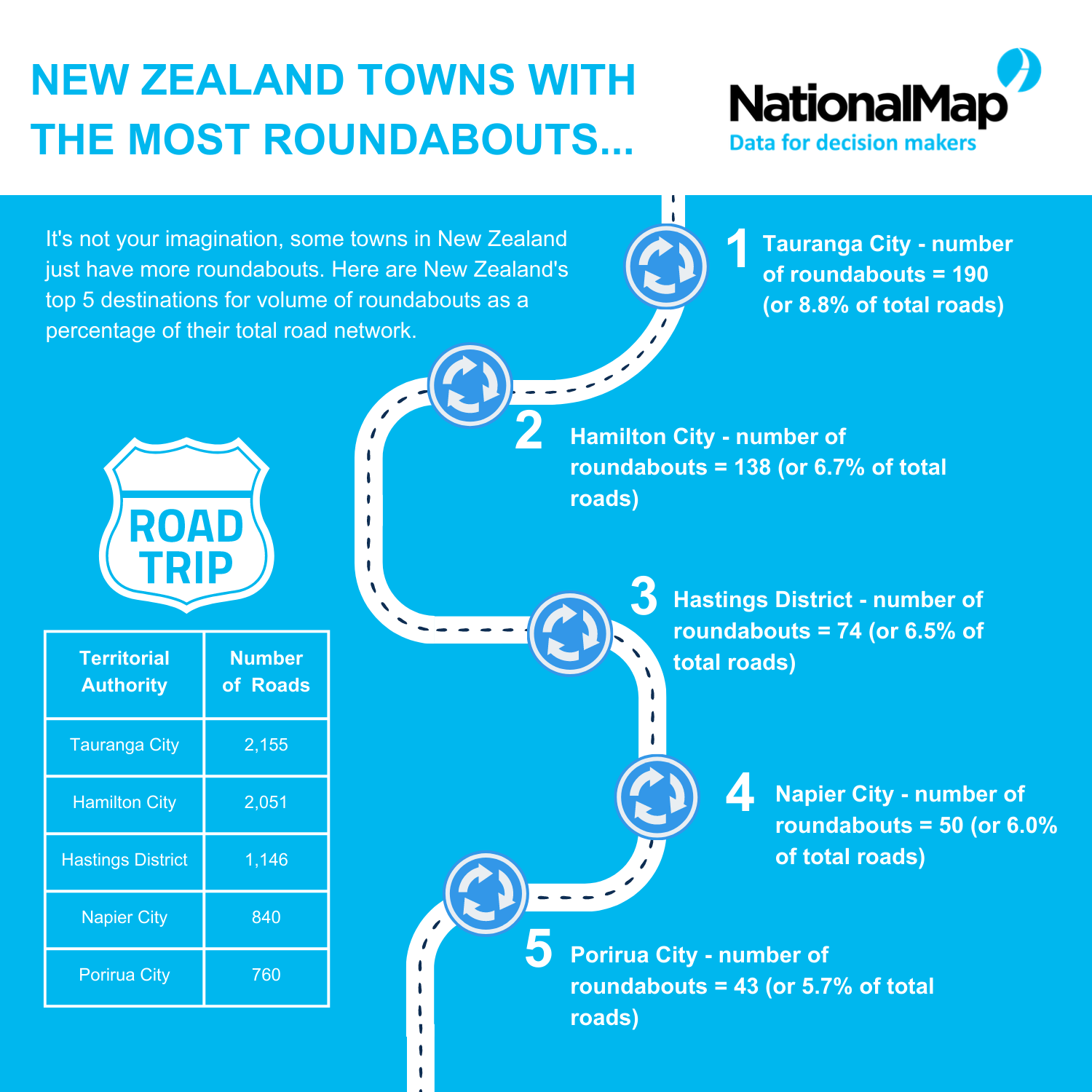
For the everyday Kiwi, road traffic roundabouts are probably an often overlooked and underappreciated feature of our road network.
Which is a shame really, as roundabouts have a rich history, with the first modern traffic roundabout generally considered to be the frankly terrifying multi-lane free-for-all that is the Place de l'Étoile (or Place Charles de Gaulle) that surrounds the Arc de Triomphe in Paris, France.
Well in excess of 100 years old, the Place de l'Étoile remains something of an international roundabout icon.
Closer to home though, New Zealand’s own roundabouts have also been acclaimed by such lauded institutions as the UK Roundabout Appreciation Society who named the Titirangi Roundabout the international roundabout of the year in 2017.
If that wasn’t enough excitement, then how about the case for Wellington's Basin Reserve cricket ground being located within the largest roundabout in the Southern Hemisphere..?
More prosaically, but perhaps more importantly, roundabouts are also usually pretty sound mechanisms for improving road safety, reducing congestion and improving the environment (when compared with stop signs or traffic lights).
So, the team at NationalMap thought that it’s perhaps time to shine a light on the humble roundabout, dig into why we have them on our roads, and where you can find them in volume.
5 reasons roundabouts should be celebrated
- Roundabouts tend to promote smoother traffic flow by eliminating the need for traffic lights. With vehicles entering the roundabout yielding to circulating traffic, the likelihood of sudden stops and traffic jams is reduced. This in turn leads to improved travel times and decreased congestion, particularly during peak hours.
- Roundabouts have been shown to reduce fatalities and the severity of accidents by removing the risk of head-on collisions common in traditional intersections.
- It’s also been established that roundabouts are generally more environmentally friendly (compared with intersections utilising traffic lights) because continuous traffic flow and reduced idling time result in lower fuel consumption and greenhouse gas emissions.
- While the initial construction costs may be higher compared to stop signs or traffic lights, roundabouts usually have lower operational costs over their lifespan.
- For those of an aesthetic disposition it’s probably fair to say that roundabouts also offer better opportunities for landscaping and enhancements, often improving the overall appearance of roadways – step forward the Titirangi roundabout!
New Zealand’s top 5 destinations for roundabouts
No, it’s not your imagination, some areas do just have more roundabouts than others. So, if you’re a roundabout enthusiast then you should head for the following roundabout hotspots in rank order of volume of roundabouts as a percentage of their total road network:
- Tauranga City
- Hamilton City
- Hastings District
- Napier City
- Porirua City
NationalMap’s road network contains millions of data points on multiple attributes and that of course includes all roundabouts nationally.
If you believe your business operations can be helped by deploying NationalMap’s road network and routing data then get in touch with us today.
